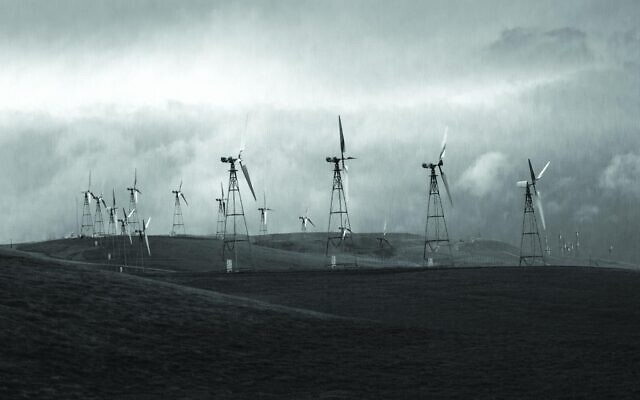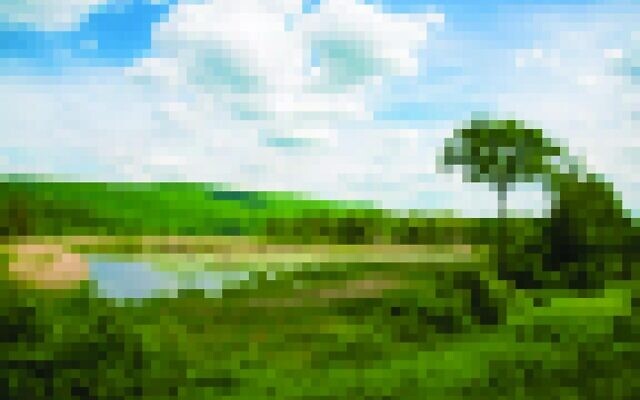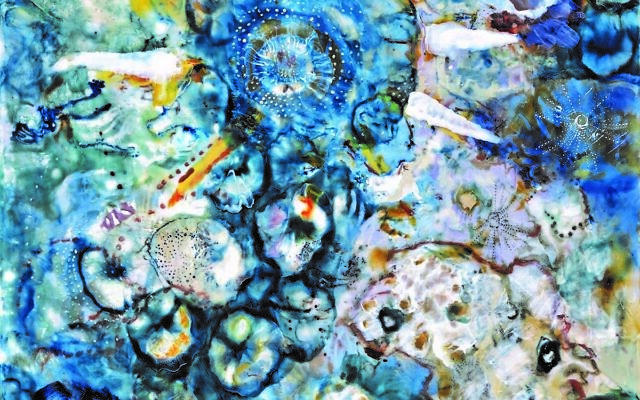COVID, Climate and Art
Exhibition from New York focuses on today’s critical issues while art and social activism stimulate discussions on correcting human habits and saving the planet.
While the William Breman Jewish Heritage Museum isn’t presently open to the public, it is moving ahead with virtual exhibitions and educational workshops and looking forward to its future reopening.
In the online exhibition Terra inFirma, artists confront today’s environmental issues and they call for action to help save the planet.
The exhibition was scheduled to be featured at The Breman Museum this year. It had been on exhibition at the Dr. Bernard Heller Museum at Hebrew Union College-Jewish Institute of Religion in New York from 2018-19. To maintain social distancing, The Breman Museum will present the exhibition as a virtual display next month.
As the world deals with the COVID-19 pandemic and global warming, I reached out to three artists in this exhibition to hear their response to today’s issues. I asked how their artwork was impacted by the coronavirus, Jewish life and values, climate change and global warming.
It opened up discussions about contemporary social activism and what is inspiring future generations to help the planet.
Larry Frankel
Vanishing Landscape, 2018
Photography
20-by-24 inches
My piece represents the illusion of a depiction of landscape. As the viewer approaches the image, the overall landscape begins to pixelate. The scene disappears into a series of large pixels, thus creating the actual image of a landscape as an illusion.
COVID-19 has connected me to humanity in a worrisome way. It has limited my ability to explore and move about my outside environment freely. It has caused me to concentrate on looking within the inner environment of my home and has forced me to analyze the reasons for my collecting the objects of memorabilia that I own.
I have now begun to create images based upon these possessions, and what they represent to me.
For me, there exists a relationship between today’s fragile Jewish life and the frailty of our view and treatment of our environment. They are both very precious and need commitment and tender loving care to ensure their futures.
Unless we as a society recognize and work at reversing the effects of global warming, the results will change the way in which we exist within our environment. I feel these changes will be debilitating to the planet we live on and will have a negative effect on humanity.
The pandemic of COVID-19 has caused global social action. I hope that the adverse effects global warming will cause the same social awareness and we will respond the same. Our positive response to global warming, I feel and hope, will pay it forward to future generations in preserving the planet we live on.
Marilyn Banner
Sea Stars, 2014
Encaustic (pigmented beeswax) on wood
16-by-16-inch unframed
18-by-18-inch framed
My work is, at its heart, about reconnecting to the multilayered beauty and complexity of nature. For me, one of the most critical things we need to reclaim in order to shift our relation to the natural world and save the planet is restoring our sense of deep respect and reverence for nature. Some of my work appears abstract, not because of a distancing from what is, but because I am trying to look deeply into what I see so that the name of it falls away, and the conditions of impermanence and mystery can shine through.
Of all the things we need to do to save this world, restoring reverence is at the foundation. Without it, all solutions are weakened and incomplete.
I have not changed my approach to art making, but I have begun putting a painting or sculpture/assemblage outside my house daily during “sheltering in place,” and will continue doing so. Much of the work is older and some is recent. The neighbors are social and political activists and appreciate the boost they can get from art and music.
(I team up with Carl Banner, my musician husband, to present open door concerts that pair music and art.)
I see creating and sharing/spreading deep meaning and beauty as a way of “fixing the world.” It is not the only way, but it is my way and maintains my integrity.
In addition, much of the work that I have been putting in front of our house daily has Jewish content – Hebrew letters imbedded, images of ancestors, etc.
I post my work (Instagram, Facebook) and my way of seeing – i.e. images of my artwork and images of what inspires me in nature – most recently lichen, stone and tree bark. I find responses to my Instagram posts from young artists saying that the work moves them deeply. I feel I am reaching out to the future.
Cali Gorevic
Wind, Power, Hope: The Front Line, 2014
Photography
13-by-19-inch unframed
21-by-28-inch framed
Many people are opposed to windmills, some for aesthetic reasons, others for environment concerns such as bird safety. Neither of these objections are to be disregarded, but Jews, perhaps more than most, understand the need to make survival a priority.
I live in a rustic area. We have wood telephone poles with wires carrying electricity, telephone and Wi-Fi signals from house to house. These poles may not be beautiful, and they may have impacted animal habitats, but none of us want to live without the services these poles provide.
Anything can be beautiful if you’re looking at it from the right angle. If we are to survive, and if we are to do without Arab oil, alternative forms of energy are necessary. Future generations will thank us. Windmills can be beautiful.
Visit TheBreman.org for four Friday workshops, 11 a.m. July 10-31. Teaching artists in their studios will create workshops with global warming themes. Sign up and get your supply list so you can participate with your family.
Susanne Katz is director of exhibitions for the William Breman Jewish Heritage Museum.






comments